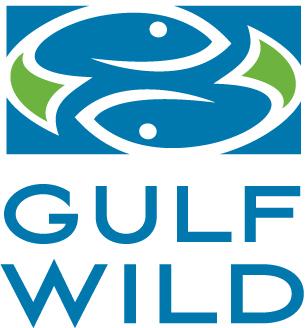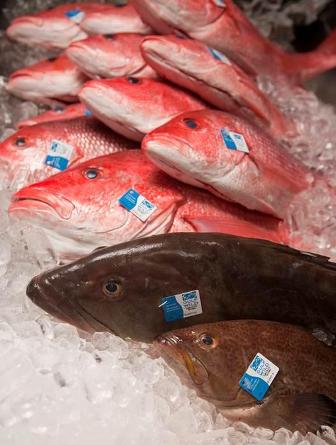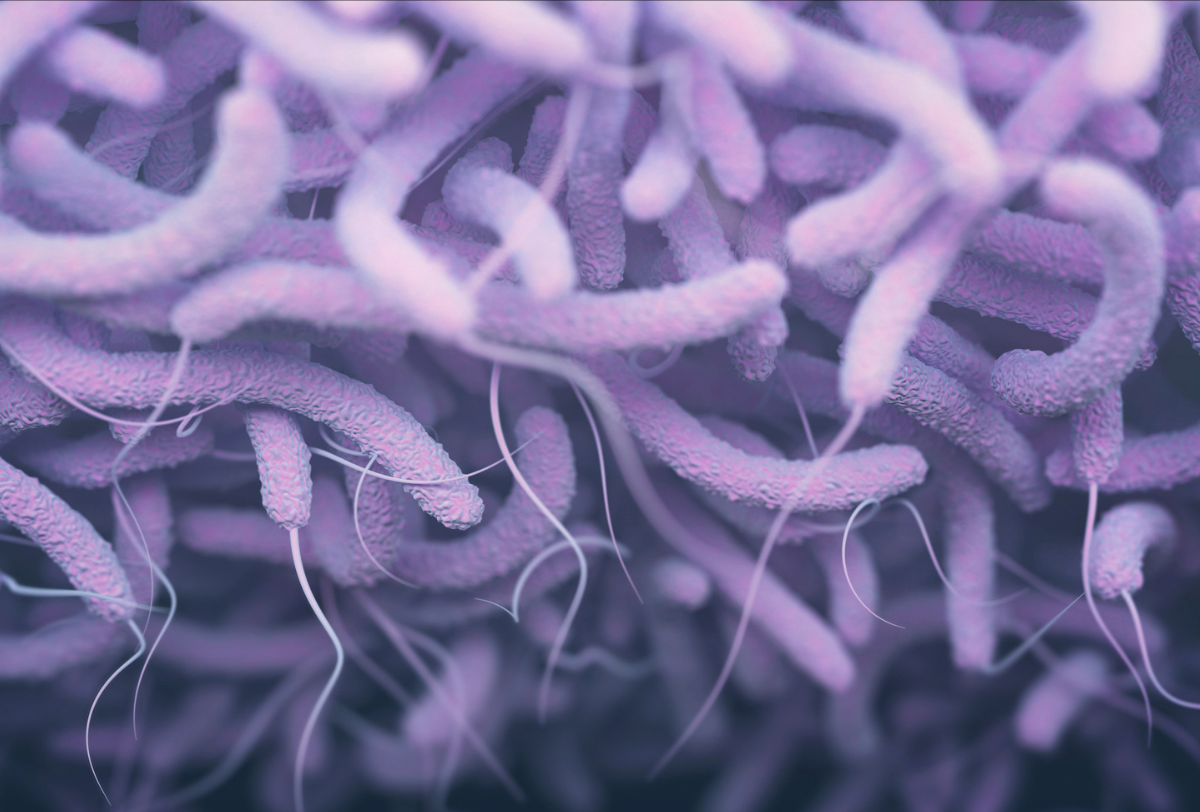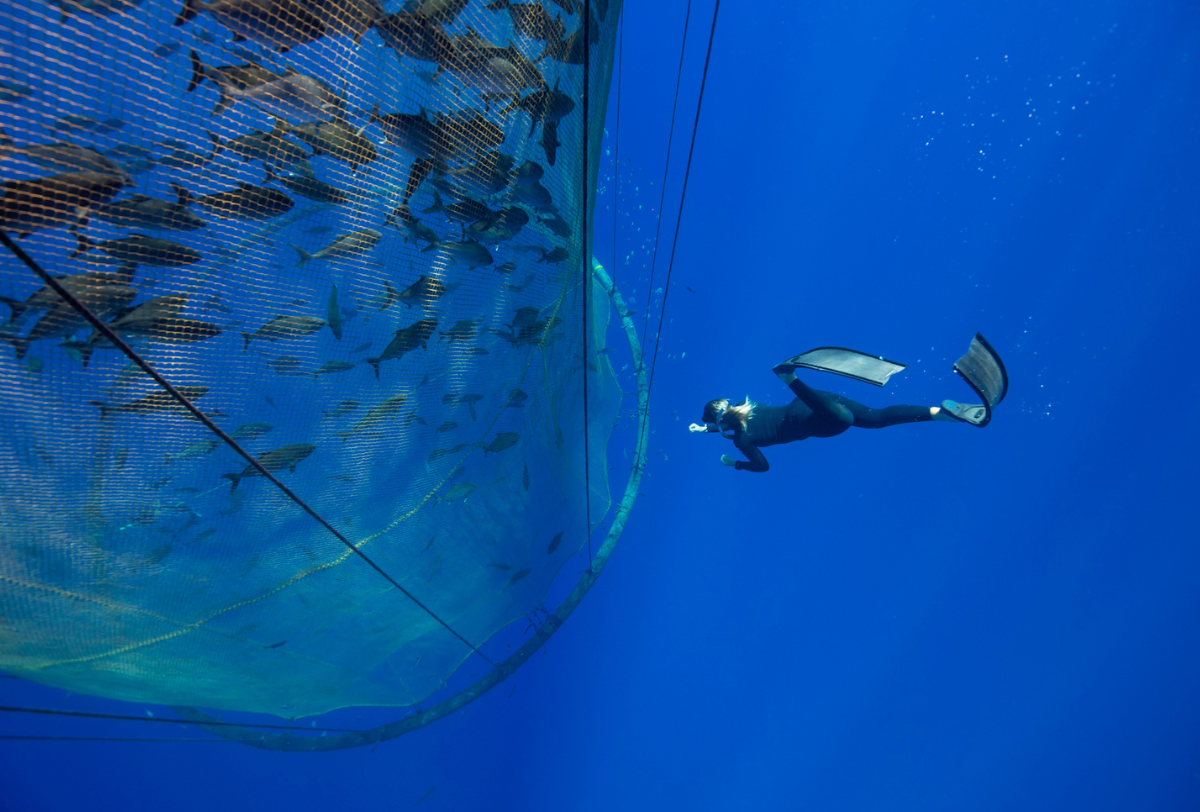Environmental Defense Fund Partners with Gulf Fishermen to Launch Gulf Wild™ Seafood Assurance Program

In a bold effort to restore consumer confidence in Gulf of Mexico seafood, EDF is working with a group of forward-looking Gulf fishermen and other conservation and fishery improvement organizations to launch a new seafood assurance campaign called Gulf Wild™. The Gulf of Mexico Reef Fish Shareholders’ Alliance, a trade organization of fishermen in the individual fishing quota (IFQ) catch share program for Gulf red snapper and grouper, developed Gulf Wild™ in collaboration with EDF to help consumers, chefs, and retailers identify responsibly managed, safety-inspected, authentic Gulf seafood that can be tracked directly to its source.
Shareholders’ Alliance president and Gulf fisherman David Krebs announced Gulf Wild™ earlier this week at the opening of the 2011 International Boston Seafood Show. Krebs said one of the current challenges that Shareholders’ Alliance fishermen face today is “educating conscientious consumers and chefs about the conservation measures we are undertaking, and showing them how these measures are helping species like Gulf grouper and Gulf red snapper.”

Gulf Wild™ requires participating fishermen to verify that the fish were caught in a sustainable manner under a unique set of “Conservation Covenants”, which guarantee conscientious harvesting. Additionally, Gulf Wild™ fishermen have already been operating under a red snapper IFQ program since 2007 to better manage the fishery.
With that IFQ in place, Krebs said, “Gulf red snapper is moving from a ‘red-listed’ fishery to a more sustainable one.” Since the inception of the red snapper IFQ, overfishing has ended, wasteful discards have dropped by 80%, and fishermen have seen a 40 percent increase in the total allowable catch.
Key to the Gulf Wild™ program is a tracking system that allows the buyer to “find my fish.” Each Gulf Wild™ fish is marked with a sequentially numbered gill tag just minutes after it is brought on board, whose unique credentials are uploaded to the web when the catch reaches shore. That information is made public via myGulfWild.com, where you can enter the unique tag number and confirm the fish species, catch location, landing port, and even information about the vessel and its captain.
Finally, in direct response to consumer concerns stemming from the BP oil disaster, Gulf Wild™ incorporates a stringent safety-testing protocol that goes above and beyond federal requirements. An independent international testing laboratory will routinely sample Gulf Wild™ fish to test for oil-based contaminants such as PAHs, dispersants, and heavy metals.
To start, Gulf Wild™ tags are now on Gulf red snapper and grouper, with more than a dozen species from the IFQ catch share program to follow. We will continue to expand and improve upon Gulf Wild™ in the months to come, in partnership with an advisory panel of respected experts from the culinary, food safety, public health, conservation, and seafood marketing communities.
I am excited about the Gulf Wild™ project for a number of reasons. First, it highlights the efforts of a rebounding fishery that has transitioned to more sensible management and made notable environmental and economic gains as a result. Second, it shows that there are success stories to be told in the wake of last summer’s BP oil disaster. Last, but not least, Gulf Wild™ can serve as a model for other fisheries around the country as a way of building consumer confidence while creating new market value at the same time.













9 Comments
Good! Now I can be sure to stay safe by not buying any seafood that you endorse. Your credibility is shot with me. Don’t bother to contact me looking for donations anymore. There’s plenty of other organizations that are more prudent when it comes to consumer safety.
Unless you test every fish caught, you have no way to prove they aren’t contaminated. Fish swim everywhere and while they may be caught in “clean” waters, chances are they’ve also been swimming in contaminated waters too. Dolphin deaths are up 14 TIMES the norm. What makes you think these fish are any healthier???? I won’t eat Gulf seafood any time soon. There are a lot of fishermen who feel the same way about their personal eating habits, even while selling this stuff to an unsuspecting public.
I’m nowhere close to the Gulf, however I have about 70 facebook friends who live in coastal communities there, in MS, AL, FL, and LA. Many are shrimpers, crabbers, fishermen (and fisherm’ams). I’ve been following the Gulf issue very closely. Every sngle person I am facebook friends with was not sick at the beginning of this nightmare and is now sick with symptoms described in MSDS of oil and Corexit. One young woman I know of has died from symptoms from exposure to these chemicals. I believe there are a LOT more people who are suffering mild, moderate, and severe symptoms and more will die.
From the posts, videos, photographs, eye (and nose)witness accounts, I am convinced that there is NO seafood coming out of those waters that is safe to eat. And I am SHOCKED that the EDF is not only going along with this, but also PARTICIPATING. I have been a long time supporter of the EDF and I feel betrayed and abandoned by them from what I read in this article
Disappointment is not enough to say how I feel about EDF’s partnership with any seafood distributor or business out of the Gulf of Mexico after the biggest ecological disater ever to happen in America less than a year ago. Have you not kept up with the devastation on the Gulf Coast? Ecocide and Genocide? BPs Oil/Corexit crime goes beyond the “spill” event and has devastated the fishing industry and the fishing families that depended on it for their living. Around 200 dead dolphins have washed ashore since January which is vastly above normal numbers. EDF has made a dreadful decision to support Gulf seafood in any form before substantial testing and studies have been completed to ensure it’s safety. It will be in your best interest to pull out of the partnership asap before you loose all credibility.
Looking at the responses to this blog post, I sense some fear and misunderstanding of the Gulf Wild program (and perhaps in the objectives of the EDF itself). EDF states at the top of the page that they partner with businesses, governments, and communities to find practical environmental solutions. The Gulf Wild program is a perfect example of this partnership, in which EDF provides leadership in meeting the goals for safe fish from sustainable fisheries in the Gulf of Mexico. There are no easy solutions for overcoming the effects of the Gulf spill, both real and perceived. A program such as the Gulf Wild program sponsored by EDF will provide safety testing, support for covenants for sustainable fisheries (see http://www.shareholdersalliance.org/sustainability), and traceability of the fish product to the catch location, the vessel, and the captain. This is a case of “very much in the right direction”, and should be welcomed by anyone who cares about the vitality of the Gulf of Mexico and the health and well-being of its fisheries.
The dispersant sprayed on the Gulf of Mexico, Corexit has one “Environmental Precaution: DO NOT CONTAMINATE SURFACE WATER.” The main ingredient (30-60%) of Corexit 9527A is 2-butoxyethanol and is classified by DOT as “POISONOUS MATERIAL”. Millions of gallons of Corexit have been sprayed on the Gulf of Mexico. As you see, the one warning has been ignored so it is up to you to seek the truth and not believe what is merely claimed by parties who stand to gain from telling you seafood is safe. More so, question the honesty of those who are party to the spraying (BP & government). Corexit is poison!
The oil was bad enough but Corexit made a bad situation much worse. The MSDS for ‘2-
butoxyethanol’ says it causes birth defects and fertility problems and may cause cancer, damage blood, kidneys, liver and Central Nervous System. About 150 dead dolphins have washed up in recent weeks. At least 50 are stillbirths. I suspect we may never learn the whole truth about this sad occurrence which is classified as an ‘Unusual Mortality Event’. Many people are very sick and I have witnessed the blistering sores that come up soon after brief contact with Gulf water. Can you imagine the effect on animals that live in that water?
I am concerned about the future of the Gulf, dolphins and all sea creatures but I am also concerned about people. President Obama encourages people to go swimming in the Gulf and eat the seafood but it IS NOT SAFE! Independent test results on seafood are extremely alarming and quite the opposite of government/NOAA tests (even when they divide same sample). The ‘sniff tests’ by government were an insult to common sense and nothing but a farce.
The claims made on this website are a disgrace and a danger to human health. GOV Inc has protected BP throughout this entire disaster and this is just another example of misinformation. I have lived on or near the Gulf most of my life and I miss seafood tremendously but it is not worth the “trade-off”. This is a serious matter so PLEASE read and share the important facts, information, details, sources and the dangers of oil and Corexit in the Gulf at the link below. I suggest you start with, ‘The Gulf of Mexico is NOT safe! It is Dying!’
http://saynotocorporateamerica.blogspot.com/2011/02/gulf-of-mexico-is-not-safe-it-is-dying.html
Consumer safety is of the utmost importance to EDF. We have been giving consumers science-based fish consumption advice for almost ten years through our online Seafood Selector, which profiles mercury and PCB levels in more than 200 seafood items on the U.S. market. We have used this experience to institute the most precautionary and health-protective standards available when it comes to Gulf Wild™’s supplemental safety testing, which was developed in partnership with experts from the University of Alabama-Birmingham’s School of Public Health. Additionally, in invited testimony to the President’s Oil Spill Commission, I urged the federal government to expand their testing to include both dispersant and heavy metals. We will continue to monitor their efforts and review the ongoing results of their testing.
While we – or anyone else for that matter – cannot test every single fish for obvious reasons, we are spending tens of thousands of dollars to go beyond what the government has done and ensure that this is the most tested Gulf seafood on the market. We are testing more than a dozen species in all five Gulf states with the help of Eurofins Central Analytical – an internationally accredited laboratory with the most sensitive equipment. Early samples show virtually no traces of PAHs or dispersant, and we are committed to long-term testing and will post our results monthly to MyGulfWild.com for independent validation. And to your point, Kaye, we feel this is an important step towards helping the fishermen and fishing communities wrongly affected by this disaster.
I invite you to visit our Health Program’s chemical blog, which has been on the front line to chronicle the toxicology of Corexit usage during the BP oil disaster.
BILLIONS of animals/fish died in the months since the Gulf was oiled and sprayed with poisonous Corexit. That is undeniable! THE SEAFOOD IS NOT SAFE, REGARDLESS OF THAT, THE FISH NEED TO RECOVER AND REPLENISH FOR FUTURE SURVIVAL- OF FISH AND FISHERMEN!
Consider the impact the oil/Corexit have on sustainability of all species the Gulf. There have been countless MASS FISH KILLS since the spill began all along the Gulf. There were mass fish kills as far away as New Jersey and Massachusetts last year (Gulf Stream current). There were at least 2 mass fish kills since Saturday, which may or may not be related to the 100 mile long slick spotted just days before but water is too cold for algae blooms. Dead dolphins continue to wash ashore in this “Unusual Mortality Event”; 200 DEAD DOLPHINS AND HALF WERE STILLBORN. SOMETHING IS HORRIBLY WRONG! The government is covering up this important issue- that helps BP and harms the environment and People! The Obama administration has issued a gag order on data over the recent spike of dead dolphins, including many stillborn infants.
Professor Samantha Joye (from UGA) said the bottom of the Gulf is a layer of oil and dead animals. She said Gulf spill’s effects ‘may not be seen for a decade’
If the purpose is to defend environment, fishing in particular, it seems reasonable to consider all the mass fish kills that occurred and close fishing to protect what survived in hopes it can replenish the billions of dead creatures. Oyster beds have been wiped out. Dr. Joye said, “Filter-feeding organisms, invertebrate worms, corals, sea fans – all of those were substantially impacted – and by impacted, I mean essentially killed. Another critical point is that detrital feeders like sea cucumbers, brittle stars that wander around the bottom, I didn’t see a living (sea cucumber) around on any of the wellhead dives. They’re typically everywhere, and we saw none.”
There are layers of dead animals and oil on the floor of the Gulf due to the major impact from the worst environmental disaster in US history. Fish that remain should BE PROTECTED! The government is always quick to close fishing if the anything suggests overfishing threatens the future of a species. CLOSE THE GULF FOR ALL FISHING… LET IT TRY TO HEAL W/O KICKING IT WHILE IT IS DOWN!
‘The Gulf of Mexico is NOT safe! It is Dying!’: http://saynotocorporateamerica.blogspot.com/2011/02/gulf-of-mexico-is-not-safe-it-is-dying.html
I think a couple of points on the specifics of how the supplemental testing was designed by the GulfWild program is important for this discussion. For example, a more conservative and thorough evaluation of the parameters to determine the safe level of exposure has been conducted such that a range of risk levels ( up to a 1 in a million risk level) and a range of exposure scenarios (including young children and high consumption patterns) are evaluated. In each case, the fish samples analyzed were still well below the most conservative models. Second, the levels of contaminants found are consistent with or below background levels published in surveys conducted around the world.
Therefore, in my mind, if you are buying seafood, then the choice is simple: you can become an informed consumer by buying seafood from fisherman that are monitoring the safety of their seafood using very protective parameters and embracing sustainable management practices OR you can continue to take your chances and buy seafood that is not being regularly tested from a unidentified location that may or may not be polluted.